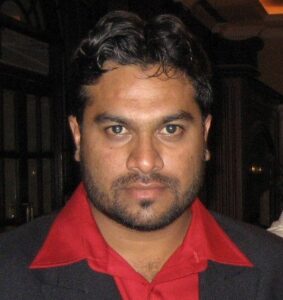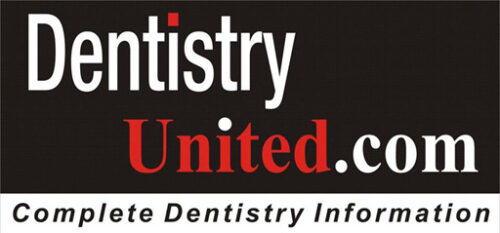
Every dental practitioner encounters a diverse set of patients, each with their own mindset, financial status, and approach to treatment. Recognizing these psychological and economic nuances enables dentists to refine communication strategies, enhance case acceptance, and deliver personalized care. Here’s an insightful classification of patients based on their approach to dental treatment and financial background.
1. Classifying Patients by Their Mindset Toward Treatment
a) Proactive Patients: The Wellness-Oriented Planners
These individuals view oral health as an investment rather than an expense. They prioritize preventive care, maintain regular check-ups, and proactively seek solutions to minor issues before they escalate.
- Highly receptive to comprehensive treatment plans
- Prefer long-term, durable solutions like implants over temporary fixes
- Well-informed about oral health or eager to expand their knowledge
b) Reactive Patients: The Crisis-Driven Seekers
These patients visit the dentist only when pain or functional impairment forces their hand. Routine check-ups and preventive care are often overlooked.
- Primarily seek emergency interventions such as extractions and fillings
- May hesitate to undergo elective or long-term procedures
- Require education and gentle persuasion to embrace preventive dentistry
c) Aesthetic-Oriented Patients: The Smile Enthusiasts
Driven by appearance, these patients place a premium on their smile. They seek cosmetic enhancements such as veneers, professional whitening, orthodontic corrections, and digital smile makeovers.
- Willing to invest in high-quality aesthetic treatments
- Motivated by social perception and professional image
- Often demand top-tier materials and state-of-the-art techniques
d) Skeptical Patients: The Hesitant Decision-Makers
These patients exhibit apprehension due to past negative experiences, fear of pain, or financial concerns. They require trust-building efforts and comprehensive explanations before committing to treatment.
- Require detailed, evidence-based consultations to gain confidence
- Likely to delay or decline treatment unless thoroughly convinced
- Prefer conservative approaches over invasive procedures
2. Categorizing Patients by Economic Considerations
a) High-Income Patients: The Quality-First Investors
These patients prioritize superior treatment outcomes over cost and seek the best available options.
- Opt for premium restorative solutions such as zirconia crowns and implants
- Expect high-end services, cutting-edge technology, and efficient procedures
- More inclined toward elective and cosmetic enhancements
b) Middle-Income Patients: The Value-Oriented Optimizers
Striking a balance between affordability and quality, these patients make pragmatic treatment decisions.
- Prioritize essential dental care but consider aesthetic treatments when feasible
- Likely to opt for durable yet cost-effective solutions like PFM crowns
- Respond well to phased treatment plans and flexible financing options
c) Budget-Conscious Patients: The Cost-Sensitive Navigators
For these patients, affordability dictates decision-making, often leading to delayed treatment or minimal intervention.
- Favor extractions over root canals to minimize costs
- More inclined toward removable dentures over fixed prosthetics
- Appreciate cost-effective alternatives, discounts, and government-aided programs
Tailoring Treatment Plans for Maximum Engagement
Understanding these classifications allows dentists to refine their approach for enhanced patient engagement and satisfaction:
- For proactive patients: Offer preventive and holistic oral health strategies.
- For reactive patients: Focus on long-term benefits and phased treatment plans.
- For aesthetic-oriented patients: Utilize digital simulations to showcase smile transformations.
- For skeptical patients: Provide transparent, data-backed treatment rationales.
- For high-income patients: Offer concierge-level services with top-tier technology.
- For budget-conscious patients: Desig affordable, stepwise treatment solutions.
Final Thoughts
By segmenting patients based on behavioral tendencies and financial constraints, dental professionals can foster stronger relationships, increase case acceptance, and deliver truly patient-centric care. The key lies in blending clinical excellence with empathetic communication, ensuring that each patient feels valued, understood, and empowered in their dental health journey.
Author:
Dr. Syed Nabeel, BDS, D.Orth, MFD RCS (Ireland), MFDS RCPS (Glasgow)
Dr. Syed Nabeel is a dedicated dental professional with a passion for advancing education, patient care, and innovation in dentistry. As the Founder and CEO of DentistryUnited.com, a platform established in 2004, he has worked tirelessly to create a global space for knowledge-sharing among dental professionals. His commitment to academic excellence led to the launch of Dental Follicle – The E-Journal of Dentistry (ISSN 2230-9489) in 2006, providing a platform for scholarly exchange and contemporary discussions in the field.
As the Managing Director of Smile Maker Clinics Pvt Ltd, Dr. Nabeel leads a growing network of clinics in South India, where patient-centered care meets innovation. His clinical expertise focuses on Neuromuscular Dentistry, Full-Mouth Rehabilitation, and Smile Makeovers, helping patients regain function and confidence through personalized treatment approaches. He is also a firm believer in evidence-based dentistry, with his in-house research team actively contributing to dental literature—an uncommon yet vital initiative in private practice.
With over two decades of experience, Dr. Nabeel has developed a keen interest in occlusal dynamics and temporomandibular joint (TMJ) disorders, ensuring that his treatments prioritize long-term comfort and stability. His curiosity and openness to emerging technologies have led him to explore digital dentistry and artificial intelligence (AI), continually seeking ways to enhance diagnostics, treatment planning, and patient experience.
Beyond clinical practice, Dr. Nabeel enjoys teaching and mentoring fellow professionals, particularly in neuromuscular dentistry and practice management. His lectures focus on workflow optimization, patient engagement strategies, and integrating modern technology into dental practices, offering practical insights that empower others to refine their approach to patient care.
Outside of dentistry, he finds joy in wildlife photography, travel, gardening, and creative thinking—interests that reflect his deep appreciation for learning and the world around him. While his journey has been shaped by dedication and perseverance, he remains grateful for the mentors, colleagues, and patients who continue to inspire him.
For professional inquiries, Dr. Nabeel can be reached at dentistryunited@gmail.com

